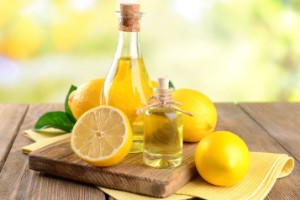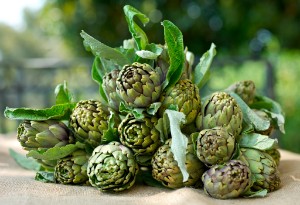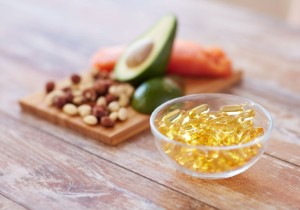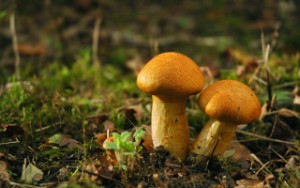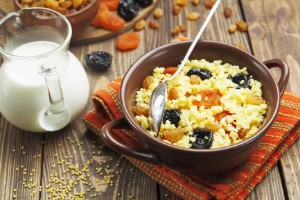Which freshly squeezed juices are good for the liver — the 7 best options
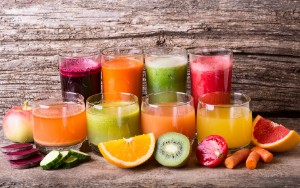 Studies confirm that some vegetables and fruits have beneficial effects on the human liver. And juices are one of the most convenient forms of consuming these products. Sometimes juices are even more effective than whole fruits.
Studies confirm that some vegetables and fruits have beneficial effects on the human liver. And juices are one of the most convenient forms of consuming these products. Sometimes juices are even more effective than whole fruits.
So, one study indicates that carrot juice can be an effective prevention of non-alcoholic fatty liver disease ( NZHBP ) &8212; one of the varieties of fatty hepatosis.
Other Research, conducted on mice, confirms that orange juice protects the liver from destruction caused by a high-fat diet.
There are 7 most effective juices in total, but their lesser-known counterparts also deserve attention. We will discuss all the options below.
In addition, there are several rules for the preparation and consumption of juices, compliance with which is necessary to achieve maximum efficiency. At the same time, it is important to observe the measure without exceeding the daily dosage. When self-juice therapy is also necessary to take into account a number of contraindications. We will consider all these issues in this article.
Content
7 juices with proven positive effects
Among the huge variety of different fruits, vegetables and berries, there are 7 species that have the most distinct positive effect on the digestive tract, including the liver.
1. Pumpkin
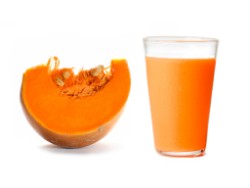 Pumpkin is often used to cleanse the body of toxins and toxins. This is facilitated by the high level of pectin content in its pulp.
Pumpkin is often used to cleanse the body of toxins and toxins. This is facilitated by the high level of pectin content in its pulp.
Pumpkin juice helps remove harmful substances and from the liver, which takes the brunt of poisoning and medication use.
Another property of pumpkin – regulation of lipid metabolism : It lowers cholesterol levels in the blood.
13 more useful properties of pumpkin for the liver →
There are two ways to make a pumpkin drink: fresh and mashed juice. The freshly squeezed version retains a greater amount of biologically active substances, but has a sharp taste and can cause severe irritation of the gastrointestinal mucosa. Made from heat-treated pumpkin, the drink loses a significant part of vitamin C, but is rich in pectin, folic acid and vitamin A.
Fresh is suitable for prevention, but in case of identified health problems, it is better to give preference to mashed juice.
2. Beetroot
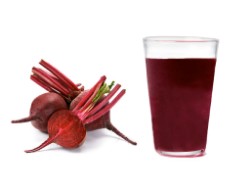 Raw beetroot has a rich vitamin and mineral composition, stands out with a fairly high caloric content among other root crops.
Raw beetroot has a rich vitamin and mineral composition, stands out with a fairly high caloric content among other root crops.
Vitamins A and C, nicotinic acid, which are part of beetroot, are the most useful. They contribute to renewal of liver cells, stimulate metabolic processes, remove toxins . Beetroot also cleanses the bile ducts, increases the outflow of bile.
9 more facts about the benefits of beetroot for the liver →
But its freshly squeezed juice may seem unpleasant to taste due to the high concentration of volatile substances, so it is recommended to withstand it before use for at least 15 minutes, and drink it diluted.
3. Apple
 The benefits of apples are well known: the hallmark of this fruit is iron, the content of which is really high.
The benefits of apples are well known: the hallmark of this fruit is iron, the content of which is really high.
But vitamin C and pectin play an equally important role.
Acting as an antioxidant, Vitamin C protects liver cells from the destructive effects of free radicals .
Pectin works as a sorbent , cleansing the digestive tract of toxins. This property becomes most important when taking excessive medications.
Organic acids – malic, tartaric, citric – enhance the excretion of bile. Cleaning of the bile ducts ensures the normal functioning of the liver tissue.
5 more positive properties of apples for the liver →
4. Carrot
 Orange color is given to this root vegetable by carotene. Passing through the gastrointestinal tract, this precursor of vitamin A undergoes a transformation and becomes a full participant in metabolic processes. Its main function is – suppression of free radicals and strengthening of immune protection
. It also normalizes glycogen synthesis and bile production.
Orange color is given to this root vegetable by carotene. Passing through the gastrointestinal tract, this precursor of vitamin A undergoes a transformation and becomes a full participant in metabolic processes. Its main function is – suppression of free radicals and strengthening of immune protection
. It also normalizes glycogen synthesis and bile production.
In addition, carrots are recommended for normalizing kidney function.
The elimination of toxins, which occurs due to carrot juice, restores the acid-base balance in tissues, restoring their functions. Carrots contain thiamine and riboflavin, which are responsible for the normal course of lipid and protein synthesis, and the restoration of liver cells.
Like beetroot juice, carrot juice contains a lot of carbohydrates, so it is often recommended to mix it with others or dilute it with water before use.
5 more useful properties of carrot juice →
5. Potato
 Raw potatoes are the leaders in starch, pectin and fiber content. These components have a pronounced cleansing effect on all organs of the gastrointestinal tract. The anti-inflammatory effect of potato tubers is also appreciated: they are successful in their raw form suppress inflammatory processes in the digestive organs
.
Raw potatoes are the leaders in starch, pectin and fiber content. These components have a pronounced cleansing effect on all organs of the gastrointestinal tract. The anti-inflammatory effect of potato tubers is also appreciated: they are successful in their raw form suppress inflammatory processes in the digestive organs
.
The restorative effect helps to restore the body's strength and protect internal organs from the negative effects of the environment.
A drink made from raw potatoes is prepared immediately before use, since it quickly oxidizes in the air and largely loses its properties. Starch settles quickly, so a white-gray precipitate may fall out at the bottom of the glass.
6. Citrus fruits
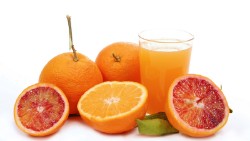 Citrus fruits are an undeniable source of ascorbic acid. They saturate the body with this antioxidant, actively fighting the effects of harmful substances coming from the outside.
Citrus fruits are an undeniable source of ascorbic acid. They saturate the body with this antioxidant, actively fighting the effects of harmful substances coming from the outside.
The usual set for fresh fruits – vitamins A, E, B1 – provides constant updates liver cells, helping to maintain their functionality. They are also involved in the regulation of cholesterol levels, normalizing fat metabolism.
Lemon is especially useful for the liver, read more here →
It is perhaps the easiest way to prepare a healthy drink from citrus fruits: if desired, you can do without even minimal equipment. It is of the highest value immediately after pressing. The high concentration of vitamin C limits the serving volume of a citrus drink.
7. Tomato
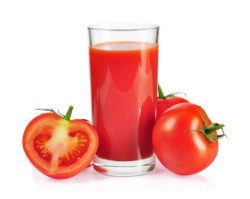 Tomatoes are a real storehouse of useful substances. B vitamins improve fat metabolism, C acts as an antioxidant, and A and E ensure the integrity of liver cell membranes, prevent fatty degeneration of this tissue
. By preventing putrefactive processes in the intestine, it reduces the total amount of toxins.
Tomatoes are a real storehouse of useful substances. B vitamins improve fat metabolism, C acts as an antioxidant, and A and E ensure the integrity of liver cell membranes, prevent fatty degeneration of this tissue
. By preventing putrefactive processes in the intestine, it reduces the total amount of toxins.
Ascorbic acid, which is found in large quantities in tomatoes, slows down the development of fatty degeneration, prevents active free radicals from destroying liver cells.
In order for this drink to bring the greatest benefit, it should be drunk without adding salt or other seasonings, preferably freshly squeezed.
However, you should approach this product with caution, in some cases, tomatoes are contraindicated .
10 other options
But there is no need to limit yourself to just this magnificent seven of the best options. After all, there are a number of plants whose juice will help in the fight for liver health.
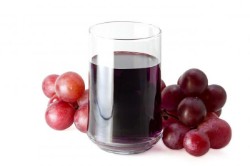
- Grape. Rich in organic acids, it stimulates regenerative processes, and also helps to reduce foci of inflammation in the abdominal organs. It has a pronounced choleretic effect.
- Cabbage . Cleanses and restores the digestive organs, promotes their regeneration.
- Black radish. Stimulates bile secretion and gallbladder motility. Improves the elimination of toxins, renews tissues.
- Cucumber . Restores normal fat metabolism. Removes toxins and spurs the production of bile.
- Garnet . It is actively used to combat gallstones and bile excretion problems. It is rich in vitamins and eliminates inflammatory processes.
- Celery . Normalizes metabolism, removes toxins. For its preparation, it is better to use not only the root, but also the rest of the plant.
- Parsley . Eliminates intoxication, decomposes and removes harmful substances. Accelerates tissue repair.
- Burdock. Is known for its anti-inflammatory and bactericidal effects. The choleretic effect normalizes the excretion of this secretion, supports digestive function.
- Celandine . It has a disinfecting and analgesic effect, provides increased bile outflow. Increases the resistance of organs to the effects of pathogens and viruses.
- Aloe . It dilutes and removes bile, cleansing the ducts. It is used as a preventive and therapeutic agent for inflammation.
Daily allowance
The daily allowance for different fruits differs significantly:
- Citrus, apple, tomato, grape can be consumed up to 500 ml per day, divided into several portions.
- Pumpkin – 300 ml, also in several doses.
- But cabbage, potato or beetroot – no more than 100 ml per day, preferably in diluted form.
Some of the juices are suitable for regular preventive intake, and some can be used as a component of cleansing therapy to improve the liver.
How to carry out the cleansing procedure?
The best juice consumption scheme is just to drink one glass of one kind or another every day. But some people prefer to clean the liver with more intensive juice therapy. Let's make a reservation right away that the effectiveness of such methods has not been scientifically confirmed . Therefore, it is necessary to approach this kind of therapy with caution.
In any case, there are universal rules that will help minimize the risks of side effects.
When performing a liver cleansing procedure using vegetable juices, several rules must be followed:

- Make sure that there is no allergic reaction to the plant used.
- Find out if there are any diseases that can interfere with juice therapy.
- Take freshly prepared foods unless otherwise specified in the recipe.
- Do not consume more than recommended, as excess can lead to negative consequences.
- Take this medicine on an empty stomach to ensure better absorption.
Beetroot, potato, cucumber, pomegranate are considered the most effective. Tomato, pumpkin and citrus also successfully neutralize toxins and contribute to the removal of bile secretions, but their effect is milder, designed for a longer period of use. Apple juice can be used for cleansing in combination with warm baths.
Use in some diseases
Despite the beneficial effects of many fruits and vegetables, you will have to give up eating some of them for some diseases.

- Cirrhosis. At the stage of destruction of liver tissue and rapid extinction of its function, the use of part of herbal preparations can lead to deterioration of the condition. But juices such as pomegranate, carrot, beetroot (in diluted form), tomato and aloe juice will be good helpers in recovery. But black radish and citrus fruits are not welcome.
- Hepatitis . Since this disease is basically an inflammation, all fruits and vegetables with anti-inflammatory effects become a drug. Pumpkin, carrots, potatoes, grapes, pomegranate are an excellent basis for juice therapy.
- Hepatosis . The degeneration of liver tissue into fatty tissue is usually caused by severe metabolic disorders. Tomato, pumpkin, citrus, as well as all juices that normalize lipid metabolism come to the rescue. In addition, phytotherapists recommend treating fatty hepatosis with celandine juice.
Contraindications
This method of prevention and treatment should not be used by people suffering from:
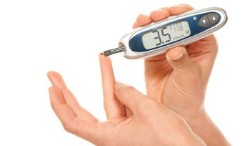
- Individual intolerance to certain vegetables and fruits;
- Diseases of the gastrointestinal mucosa;
- Cholelithiasis in the acute stage;
- Urolithiasis (they are not recommended to consume a significant amount of oxalic acid, which is found in many fruits);
- Diabetes mellitus (you can not use those that contain a large amount of sugars).
Deterioration of general well-being or the appearance of pain should be perceived as a signal to stop treatment.
Interesting video
We recommend watching the video:
;
Conclusion
The use of juices to prevent diseases and restore normal liver function is very effective. In the absence of contraindications and compliance with simple rules of administration, they become a medicinal product. Fortification, removal of inflammation, cleansing and elimination of stagnation – this is an incomplete list of positive results of the use of home-made medicinal juices.
